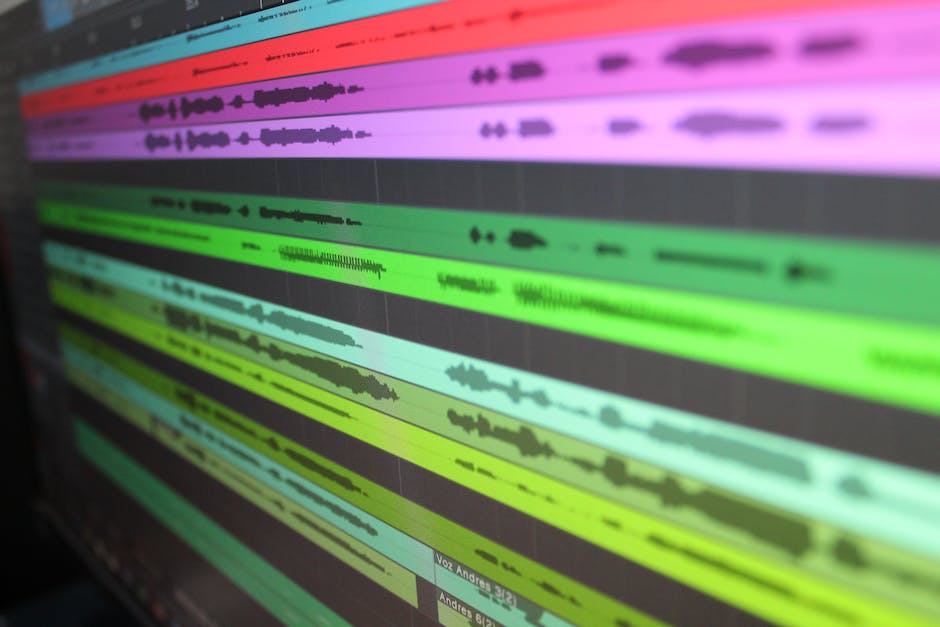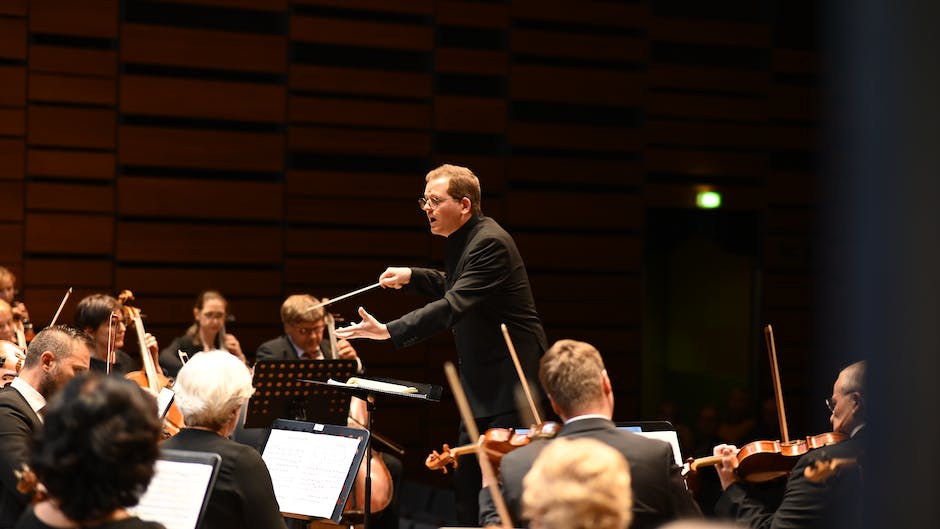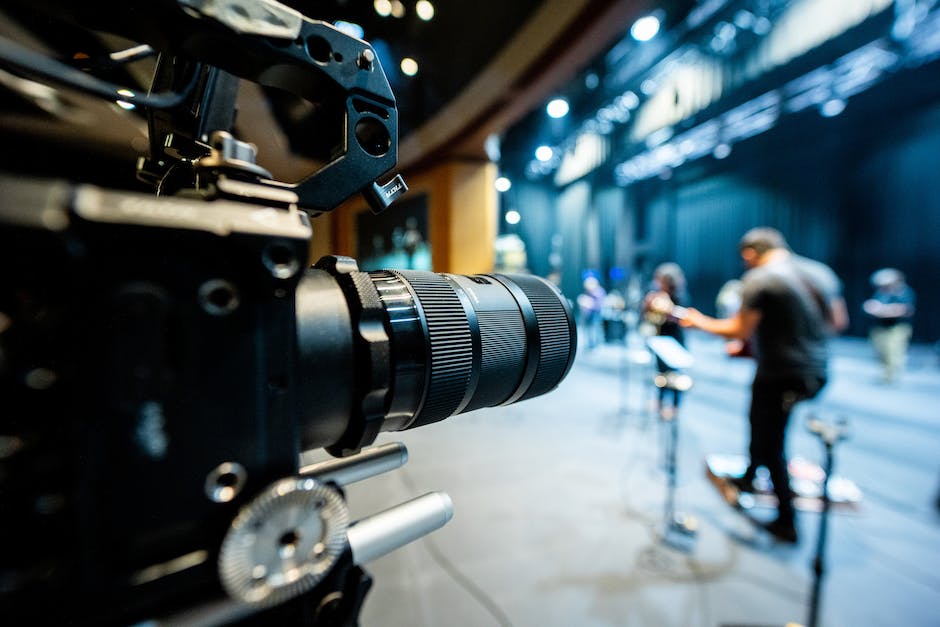In the world of digital music recording, aligning the rhythm of creativity with the pace of technology can be an intricate dance. The invisible yet impactful factor that often interrupts this harmony is latency – the time delay occurring between feeding in an input like a strum of a guitar, and receiving an output, such as hearing the sound via headphones. This abstract time gap has a potent ability to derail the melody creation process, affecting the authenticity and fluidity of the sound produced. Understanding the concept, technical aspects, and implications of latency, along with having the knowledge of how to identify and minimize it, is essential in achieving quality recordings that echo the true essence of the musical idea.
Understanding the Concept of Latency
Latency: the invisible specter that silently haunts the hallowed halls of music production. An element often overlooked, yet its impact is indecisive in the ultimately delivered sonic masterpiece. But what exactly is this latency we speak of, and why should it matter in music recording?
In its simplest form, latency refers to a short duration of time that passes from the moment an audio signal is input into a system until it emerges from the output. Restrained within the confines of a digital audio workstation, this slight delay may not seem more than a blip. Yet, delve deeper, and the magnitude of its influence unfurls, attesting to the profound impact of split-seconds.
Primarily, latency is inherently dependent on the buffer size of an audio interface, the electronic device that bridges the analog-digital divide. This buffer acts as a temporal vault, holding the digital data from the music being recorded before pushing it through the interface’s converters. The bigger the buffer size, the higher the latency.
So, why exactly does this matter? For an ardent musician in the throes of a passionate performance, high latency is tantamount to a dancer missing a beat or an actor flubbing a line. It transforms the rhythmic relay of expression into a disjointed echo, forcibly icing the flowing lava of creativity.
Envision immersing yourself in the swirling melange of a symphony. Each instrument, each note, plays a critical role in birth the harmonious whole. If one note trickles late into this musical river, it distorts the entire auditory landscape.
In recording setups where the artist is listening to their input through software-based monitoring, high latency can result in the performance being off-beat. It’s akin to running a relay race where one team member is trailing. Once that synchronization wavers, the entire dynamic discordantly spirals.
On the flip side, however, low-latency is desired, not required. Depending on the genre and style of music, an artist might manipulate latency to create a specific effect or rhythm. Remember, even proofed bread sometimes needs irregularities to give it flavor.
In conclusion, latency is much like a spy in the world of music recording, unseen yet operative. It dutifully retains and releases data, dictating the temporal texture of the ultimate composition. Pay heed to this ghost in the machine. Acknowledge its existence and learn its ways, for every moment counts in the seamless symphony of sound we create and cherish. Navigate latency, and you navigate an undercurrent of rhythical synchrony, securing your place in the grand chronicle of melodious mastery.

The Technical Aspects of Latency
Plunging into a world where rhythm, harmony, and melodic symphonies run wild, latency may appear as a fishbone, pricking the soft palate of a delicious audio feast. In essence, latency represents an irksome game-changer. It’s the drop of ink in the pitcher of milk, disrupting the fluidity of an immaculately orchestrated composition.
Riding the waves of both analog and digital sounds, audio recording and the compilation of tracks often represents an art form of sorts but is not quite immune to the disruptive influence of latency. Often, latency sprouts from data transmission and processing time-gaps, leading to an unwanted delay between the triggering of an audio signal and its output. In practical terms, it’s the stumbling rift between the strike of the drum and the moment it rings in your ears.
In situations where multiple tracks are being recorded simultaneously, latency assumes a more disastrous persona. This monstrous delay can prove fatal, burdening the artist’s creativity by destroying the rhythm and flow, leaving a warlike scene of discord and disharmony on the producer’s console. Misaligned vocals and clashing chords could lead to an artistic catastrophe, turning a magnum opus into meritless cacophony.
The process of compiling tracks also suffers the wrath of latency. Imagine the heartache of discovering your expertly calibrated vintage snare recording is slightly out of time with the pulsating rhythm of the bass track due to latency! This hitch may force to recompile or even re-record parts, costing an artist precious resources of time and energy.
Yet, it isn’t all woe in the battle against latency. A resilient musician can actually turn this sonic fiend into a creative ally: a tool used to create unique audio landscapes. For instance, manipulating sounds with varying latency times can create an interesting rhythmic texture or a psychedelic echo chamber!
However, care should be taken whilst inviting latency into the creative process. Even the most adept musicians can struggle to effortlessly surf the wave-lapse latencies can introduce. On some unfortunate occasions, these experimental wanderings can lead to a maze of confused sounds and muddled beats. The line between art and mishap can often be blurred by the illusion of tricky echoes and delays.
In conclusion, understanding and managing latency is just as crucial as striking the perfect chord. High latency can cripple the expressive soul of a composition, fracturing the seamless blend of tones into a discordant array of sounds. Yet, with careful manipulation and management, latency can also give birth to unique audio experiences. As they say in the realm of music — sometimes, it’s the silent gaps between the notes that make the symphony.

Identifying Latency Issues
Just as a symphony weaves together threads of sound into a melodic masterpiece, or the raw energy of a live rock concert thrills its audience, the symphony of the recording process also relies on precision and synchrony. Yet, just as an instrument out of tune can mar the gracefulness of a musical piece, so too can latency issues drag down the efficiency and quality of a recording session. Identifying and conquering these issues is pivotal for refining the artistic composition that lies within the raw notes of a masterpiece.
Think of the latency issues as an uninvited guest, creating higher delays in your garden of creativity. If left unresolved, they can cause audio tracks to sound out of sync or detract from the artist’s desired tonality. Isolating these issues requires a keen ear, an understanding of your recording infrastructure, and a knowledge of how to interpret the mechanics of audio software and hardware.
Start with your hardware and connections. Are they in good health? Check for potential signal degradation or poor cabling that might contribute to latency. Also consider the audio interface; is it capable of handling your ambitious ensemble of tracks without losing its pace? If your existing setup is potent enough and your connections are free from any signs of wear and tear, then it’s time to investigate at the software level.
Digital Audio Workstations (DAWs) are the control rooms of your creative endeavors. Review your DAW settings, particularly the audio buffer size and sample rate. If the latency issues are persistent, try altering these settings and monitor the resulting output. And while we’re speaking software, take note of your plugins. Some may contribute more to the latency due to their design and the processing demand they place on the system; judicious selection and sparing use of plugins can help in reducing latency.
Audio monitoring can be a revealing exercise. By closely listening to the recordings and noting the sections where delays are noticeable, you trace the footprints of latency. Once latency lurks have been located, further philosophical and technical investigations can lead to their origin.
Yet, remember, latency is not always your adversary. Just as an offbeat drum rhythm can introduce an unexpected twist in a piece, latency, harnessed intentionally, can be an avenue for creative rhythm manipulation and intriguing sound design. Disrupting timing and synchronization could become a novel, albeit courageous, method to emboss an original footprint in your masterpiece. But taming this wild beast requires an advanced understanding of your musical gear and a bold ear for experimental sounds.
In the grand symphony of music production, latency can appear as a dissonant note disrupting the harmony. But with the right understanding, sharp acumen, and appropriate tools, the dissonance can be transformed into a bridge towards a breathtaking crescendo. Music, after all, is no stranger to the beauty of harmony arising from a well-resolved discord.
Embrace latency; let it not be a hindrance to creativity. Instead, let it inspire a new degree of innovation, a way to push boundaries and challenge the conventions of sound. For the musical journey is not just about reaching its conclusion but also about finding novel rhythms and harmonies along the way. Latency, in this light, becomes yet another fascinating layer in the canvas of music production.

Strategies to Minimize Latency
Striding further into the depths of music production, it’s clear that minimizing latency is an art form unto itself. This journey doesn’t stop at just acknowledging latency’s existence or its various effects but extends to the deployment of effective strategies designed to tackle this unseen adversary. Woven into the fabric of music production, these methods reverberate with the promise of smooth harmonics and immaculate rhythm.
Close examination of the digital audio workstation (DAW) is one of the critical skills in the repertoire of a music producer dealing with latency. It’s not just about knowing the layout, but more so about delving into its intricate settings, tinkering and adjusting until latency is reduced.
This path to latency-less recording naturally goes through plug-in optimization. Some plug-ins are notorious latency-inducers due to their inherent design and resource requirements. Prioritizing processing-demanding plug-ins, optimizing their settings, and bypassing non-essential ones during recording are keys to keeping latency at bay.
Turning vantage to the spotlight: hardware. It’s easy to forget about the physical components amidst the allure of software programs, yet interface, converters, and peripherals play a measurable role in latency. Opt for high-speed interfaces like Thunderbolt or USB-C, employ high-quality converters, and ensure peripherals are in tune with the whole recording system. These choices undoubtedly form a defense line against high latency.
In the realm of digital audio, the clock is king. A well-synced system clock contributes to a more harmonious musical environment by maintaining synchrony between different hardware components. Using a dedicated external clock or a high-quality internal clock can help reduce latency and enhance overall sound quality.
There’s also the necessity of real-time monitoring that acts as the ears of the producer. This technique entails directly monitoring the signal during the recording to notice if any latency issues arise. While it doesn’t solve latency issues per se, real-time monitoring gives one the vantage point to detect and correct them before they become embedded within the recording’s sonic fabric.
Delving deeper into the realms of music and sound, one can explore the innovative concept of offline processing. By bouncing tracks with processing-demanding plug-ins and then disabling these plug-ins, latency can be drastically reduced. This approach demands a significant time commitment, but the latency gains may well justify this.
At the heart of these strategies looms a central tenet: knowledge. Knowing the tools, understanding the recording system, being aware of the plug-in demands, mastering the DAW. Every piece of information is a weapon towards achieving a latency-free recording environment, shaping the path to exhibit the true intention of the music conceived.
In the grand composition of music production, minimizing latency by employing these strategies is equivalent to tuning a guitar or setting the right pace on the metronaught. In the world where latency can be a disruptive discordant note, innovatively crafting a latency-friendly environment is no less than clearing a stage for the symphony to play its magic. Music production, after all, is all about harmony, rhythm, and precision. The journey towards a latency-minimized setup is a fascinating aspect of this strings-pulling craft, striking a crescendo of fascination in its lovers.

Tools to Help Mitigate Latency
Marching Into the Beat of Low Latency Recordings
In the vast world of music recording, a timely harmony has music lovers, producers, and creators swaying to the same rhythm. This same resonance should also vibrate within the technical aspects of music creation, especially in the quest toward achieving low latency. Now, let’s dip our toes into the vast ocean of tools and equipment that can ably assist us on this journey.
Enter the world of high-speed digital interfaces; these paragons of technology are critical in the eternal war against latency. USB and Thunderbolt interfaces, for example, are highways of swift data transport, considerably instrumental in reducing latency. Equipped with multi-track capabilities and efficient data processing, they ensure a smoother performance, keeping your tune on track and on time without missing a beat.
Nevertheless, a word to the wise: low latency isn’t just about keeping a steady pace, but also about the quality of the relay. High-quality analog-to-digital and digital-to-analog converters significantly raise the bar for smoother recording experiences. These pieces of priceless technology contribute significantly to latency reduction by swiftly converting physical acoustic signals into digital information. The results? A symphony of meticulously captured details that do not skip any heart-wrenching melodies or soul-stirring beats in your recording.
Beyond interfaces and converters, we come to find that the quest for low latency is enhanced by external peripherals, such as high-performance hardware synthesizers or drum machines. These gadgets are designed to integrate smoothly with various interfaces, adding an immersive, tactile experience to your musical creation process. With these additions, latency becomes less of a challenge, replaced with rhythmical precision and a physical connection to the music.
In synchronizing with the harmony of time, choosing a quality audio clock is paramount, vital for ensuring the synchronization of all digital signals, a prerequisite for low latency. Audio clocks guarantee all digital components march in time, maintaining an untainted musical output and unified rhythm throughout your production.
For those treading this path adorned with auditory wonders, real-time monitoring can be a compass pointing towards lower latency. They check for any issues during the recording, so you can immediately react, adjust, and move forward without falling out of sync. Be it the subtle manipulation of a vocal pitch or the rhythmic strum of a guitar, real-time monitoring makes sure the echoes of your creativity aren’t lost in the caverns of unnecessary delays.
Lastly, but certainly not least, let’s turn our attention to the novel concept of offline processing. This powerful production technique takes on plug-ins, applying their effects post-recording and thus liberating tracks from the constraints of latency, leading you into an arena of undisturbed creative expression.
In summary, the tools we choose to wield in our journey of music production can make our voyage towards low latency a thrilling symphony or a dissonant cacophony. The mastery and understanding of our equipment bring us closer to achieving a harmonious composition, preserving the rhythmic delicate dance of music creation.
So here’s to diving deeper into the ocean, to testing the waters, playing with sounds, and engaging with a myriad of innovative tools to ensure our pursuit of the perfect melody remains undeterred by the discord of latency.

Latency, albeit imperceptible to the naked eye, plays a defining role in the realm of music recording. It has the potential to severely affect the quality, authenticity, and emotional intensity of your music. But armed with a deep understanding of latency and equipped with practical strategies for recognizing and minimizing it, you can perform the intricate dance between creativity and technology smoothly. For musicians and producers striving to preserve the pace of their musical theme and striving for fluidity in their work, choosing apt tools and gadgets that mitigate latency issues is a foundation stone for achieving seamless, undeterred, and high-quality recordings. Indeed, overcoming the barriers of latency paves the way for music that truly resonates and echoes with emotional depth and purity.

Comments.
Currently there are no comments related to this article. You have a special honor to be the first commenter. Thanks!